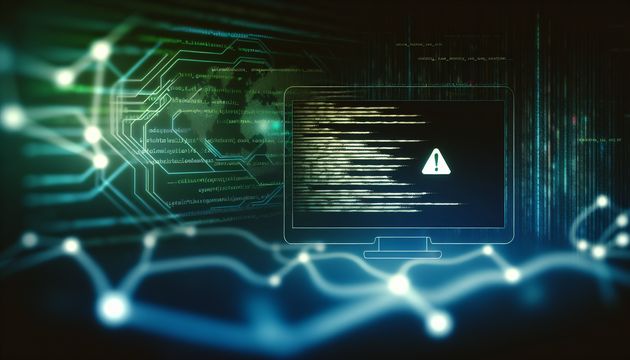
Columbia University Data Breach: A Wake-Up Call for Educational Cybersecurity
The Columbia University data breach serves as a stark reminder of the vulnerabilities in the digital infrastructures of educational institutions. Between May and June 2025, the breach compromised sensitive information of nearly 870,000 individuals, including students, applicants, and employees. However, further investigations revealed that the breach affected over two million individuals, highlighting the evolving understanding of its magnitude (Bleeping Computer; The National CIO Review). This incident not only exposed personal identifiers and financial data but also disrupted university operations, underscoring the critical need for robust cybersecurity measures (Yahoo News).
Columbia University Data Breach: Scope and Impact
Scale of the Breach
The data breach at Columbia University is one of the most significant cybersecurity incidents in the educational sector in recent years. The breach, which occurred between May 16 and June 2025, compromised the personal, financial, and health information of nearly 870,000 individuals, including students, applicants, and employees (Bleeping Computer). However, further investigations revealed that the breach affected over two million individuals, extending beyond the initially reported figures (The National CIO Review). This discrepancy highlights the evolving understanding of the breach’s magnitude as investigations continue.
Nature of Compromised Data
The breach exposed a wide range of sensitive information. The stolen data includes personal identifiers such as names, dates of birth, and Social Security numbers. Additionally, it encompasses financial data, including financial aid-related information, and health information shared with the university. Academic records, insurance information, and contact details were also compromised (Bleeping Computer). This extensive range of data types significantly increases the risk of identity theft and fraud for the affected individuals.
Impact on University Operations
The breach had a substantial impact on Columbia University’s operations. Following the discovery of the breach, the university experienced a technical outage that disrupted IT systems, including user authentication services, locking students out of their emails and other platforms (Yahoo News). This disruption underscores the operational vulnerabilities that can arise from cybersecurity incidents, affecting not only data integrity but also the daily functioning of institutional systems.
Response and Mitigation Efforts
In response to the breach, Columbia University has taken several steps to mitigate its impact. The university has offered two years of free credit monitoring, fraud consultation, and identity theft restoration services through Kroll to those affected by the breach (Bleeping Computer). Additionally, the university has engaged external cybersecurity experts to assist in the investigation and has notified law enforcement authorities to address the breach (Claim Depot).
Political Motivations and Broader Implications
The breach is not only significant in terms of its scale but also in its motivations. Investigations have revealed that the attack was politically motivated, aimed at retaliating against university policies and perceived administrative biases (The National CIO Review). This aspect of the breach highlights the growing trend of ideologically driven cyberattacks targeting higher education institutions. It underscores the need for universities to bolster their cybersecurity defenses to protect against sophisticated and politically motivated threats.
Long-term Consequences for Affected Individuals
The long-term consequences for individuals affected by the breach are significant. The exposure of personal, financial, and health information increases the risk of identity theft and fraud, which can have lasting impacts on individuals’ financial stability and privacy. While Columbia University has not found evidence of misuse of the stolen data, the potential for future exploitation remains a concern (Bleeping Computer). Affected individuals must remain vigilant and take proactive steps to monitor their credit and protect their personal information.
Institutional Vulnerabilities and Lessons Learned
The breach at Columbia University highlights the vulnerabilities inherent in institutional cybersecurity systems. The attack exploited security gaps in the university’s aging login infrastructure, emphasizing the need for regular updates and improvements to cybersecurity measures (The National CIO Review). As universities increasingly become targets for cyberattacks, they must prioritize building resilient defenses and challenging assumptions about their systems architecture and risk management strategies.
Broader Implications for the Educational Sector
The Columbia University data breach serves as a wake-up call for the broader educational sector. It underscores the importance of robust cybersecurity measures to protect sensitive information and maintain operational integrity. Educational institutions must recognize the growing sophistication of cyber threats and the potential for ideologically driven attacks. By investing in comprehensive cybersecurity strategies, universities can better safeguard their data and ensure the continuity of their educational mission (Hoplon Infosec).
Emerging Technologies and Future Risks
As technology evolves, so do the risks associated with it. Emerging technologies like Artificial Intelligence (AI) and the Internet of Things (IoT) present new challenges for cybersecurity. These technologies, while offering significant benefits, also increase the attack surface for potential breaches. Educational institutions must stay ahead of these trends by integrating advanced security measures and continuously updating their defenses to protect against these evolving threats.
Final Thoughts
The Columbia University data breach serves as a cautionary tale for educational institutions worldwide. It underscores the necessity for comprehensive cybersecurity strategies to protect sensitive information and maintain operational integrity. The politically motivated nature of the attack highlights the growing trend of ideologically driven cyber threats, urging universities to bolster their defenses against sophisticated attacks (The National CIO Review). As the educational sector grapples with these challenges, investing in resilient cybersecurity infrastructures becomes paramount to safeguarding data and ensuring the continuity of educational missions (Hoplon Infosec).
References
- Bleeping Computer. (2025). Columbia University data breach impacts nearly 870,000 students, applicants, employees. https://www.bleepingcomputer.com/news/security/columbia-university-data-breach-impacts-nearly-870-000-students-applicants-employees/
- The National CIO Review. (2025). Millions of Columbia University records exposed in political cyberattack. https://nationalcioreview.com/articles-insights/extra-bytes/millions-of-columbia-university-records-exposed-in-political-cyberattack/
- Yahoo News. (2025). Columbia University data breach affected university operations. https://www.yahoo.com/news/articles/columbia-university-data-breach-affected-225900546.html
- Claim Depot. (2025). Columbia University data breach. https://www.claimdepot.com/data-breach/columbia-university
- Hoplon Infosec. (2025). Columbia University data breach case study. https://hoploninfosec.com/columbia-university-data-breach-case-study/



